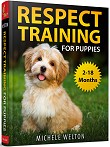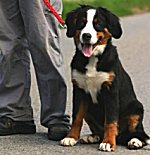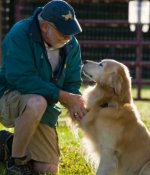Shetland Sheepdogs: What's Good About 'Em, What's Bad About 'Em
Shetland Sheepdog temperament, personality, training, behavior, pros and cons, advice, and information, by Michele Welton, Dog Trainer, Behavioral Consultant, Author of 15 Dog Books

Proud and animated, the Shetland Sheepdog is a swift, light-footed runner and an agile, graceful jumper. Don't be fooled by his size – this breed has the heritage of an active herding dog and needs more exercise than many other smallish dogs.
More importantly, Shelties need "mental exercise." These bright dogs cannot just sit in the backyard and do nothing. To be happy and well-behaved, they require mental stimulation such as advanced obedience, agility, herding, or challenging games you play with them, even if it's just fetching balls and finding hidden toys.
Exceptionally attentive and responsive, Shetland Sheepdogs are easy to train if you have a calm voice and a light hand on the leash. Sensitivity is one of the hallmarks of this breed. Praise, gentle guidance with your hands or leash, and food rewards are the way to go with Shelties. They wilt under heavy hands.
These dogs have quick reflexes, which can make them overly reactive to loud noises and sudden touches. Indeed, quite a few individuals are highstrung, startle easily, and do not do well in an environment with frequent tension, loud voices, or too much rough-housing. They can be overwhelmed by the herky-jerky mannerisms of small children.
Most Shelties have a soft, sweet temperament. They're peaceful with other animals and polite with everyone, though typically reserved and sometimes timid with strangers. To build a confident temperament, the Shetland Sheepdog needs more extensive socialization than many other breeds.
Shelties become unhappy when left for long periods of time without companionship, and unhappiness can translate to neurotic behaviors, destructive chewing, or chronic barking.
The major behavioral issue with Shelties, in fact, is excessive barking, and some individuals have high-pitched, piercing voices.
If you want a dog who...
- Is conveniently-sized, light on his feet, and graceful
- Has a lovely feathered coat in a variety of striking colors
- Is athletic and animated, a swift light-footed runner and jumper
- Has a "soft" personality (sweet, gentle, sensitive)
- Is peaceful with strangers and other animals
- Is bright and attentive and learns very quickly
A Shetland Sheepdog may be right for you.
If you don't want to deal with...
- A careful search to avoid highstrung, neurotic individuals
- Providing sufficient exercise and mental stimulation to prevent boredom
- "Separation anxiety" (destructiveness and barking) when left alone too much
- Shyness or fearfulness in some lines, or when not socialized enough
- Excessive sensitivity to stress and loud voices
- Chasing things that move (instinctive herding behaviors)
- Barking
- Frequently brushing and combing
- Heavy shedding
- Potential for serious health problems
A Shetland Sheepdog may not be right for you.
 |
Dog Breed Traits – Which Traits Are Right For You? In this brand new series, I'll help you decide which dog breed traits would best suit you and your family, your home and yard, and your lifestyle, so you can choose the best dog breed for your family. |
Keep in mind that the inheritance of temperament is less predictable than the inheritance of physical traits such as size or shedding. Temperament and behavior are also shaped by raising and training.
FREE eBooks by Michele Welton
![]() "Respect Training for Puppies" and "Teach Your Dog 100 English Words" are free step by step guides to teaching your pup to be calm and well-behaved.
"Respect Training for Puppies" and "Teach Your Dog 100 English Words" are free step by step guides to teaching your pup to be calm and well-behaved.
![]() "11 Things You Must Do Right To Keep Your Dog Healthy and Happy" is a free guide to keeping your dog mentally, physically, and emotionally happy and healthy so you can enjoy a longer lifetime of companionship.
"11 Things You Must Do Right To Keep Your Dog Healthy and Happy" is a free guide to keeping your dog mentally, physically, and emotionally happy and healthy so you can enjoy a longer lifetime of companionship.

- You can avoid some negative traits by choosing an ADULT dog from an animal shelter or rescue group. With an adult dog, you can easily see what you're getting, and plenty of adult Shelties have already proven themselves not to have negative characteristics.
- If you want a puppy, you can avoid some negative traits by choosing the right breeder and the right puppy.
More traits and characteristics of the Sheltie
If I was considering a Shetland Sheepdog, I would be most concerned about...
- Unstable temperaments. Shelties are so numerous that most of them are bred and offered for sale by people who don't have the slightest idea of how to breed good-tempered dogs. Obedience instructors and behavioral consultants like myself see many highstrung Shelties with neurotic behaviors, including skittishness, hyperactivity, and mindless yapping.
- Providing enough exercise and mental stimulation. Though they don't need miles of running exercise, Shetland Sheepdogs are herding dogs who require regular opportunities to vent their energy and do interesting things. Otherwise they will become bored, which they usually express by chronic barking and destructive chewing.
The intelligence and enthusiasm of this breed is wasted in most households. You should get your Sheltie involved in advanced obedience classes at a local dog club, and also in agility classes (obstacle course). Also your Sheltie will love learning the tricks and games in my free online training program, Teach Your Dog 100 English Words.
- Separation anxiety. More than most other breeds, Shetland Sheepdogs need a great deal of companionship and do not like being left alone for more than a few hours.
- Timidity. Standoffish by nature, Shetland Sheepdogs need extensive exposure to people and to unusual sights and sounds. Otherwise their natural caution can become outright shyness, which is difficult to live with. Teaching your Sheltie how to be confident with the world is essential.
- Emotional sensitivity. Be honest... is there tension in your home? Are people loud or emotional? Shetland Sheepdogs are extremely sensitive to stress and may behave neurotically if the people in their home are having family problems. Shelties are peaceful dogs who need a harmonious home.
I don't recommend most Shetland Sheepdogs for homes with young children. Shelties often feel overwhelmed by the loud voices and quick movements that young children can't help making.
- Barking. Shetland Sheepdogs are herding dogs with keen senses who used their sharp voice to help control the sheep. Unfortunately that means they are often too quick to sound the alarm at every new sight and sound. You have to be equally quick to stop them. Some Shelties end up being surgically "de-barked" to manage their noise level.
- Grooming. To keep their feathered coat free of mats, Shelties require regular brushing and combing, and occasional trimming around their private parts for sanitary reasons. Ungroomed Shelties can develop serious skin problems and are in pain from the mats pulling on their skin.
- Heavy shedding. Shetland Sheepdogs shed heavily twice a year, and moderately the rest of the year. Be sure everyone in your family is okay with having hair on their clothing and furniture.
- Serious health problems. The list of health problems occurring regularly in Shelties is depressingly long. Epilepsy, bleeding disorders, heart disease, joint disorders, eye diseases, endocrine system disorders, skin problems....To keep this breed healthy, see Shetland Sheepdog Health.
My best-selling books – now available FREE on my website
 Respect Training For Puppies: 30 seconds to a calm, polite, well-behaved puppy is for puppies 2 to 18 months old. Your puppy will learn the 21 skills that all family dogs need to know. Click here to read for free.
Respect Training For Puppies: 30 seconds to a calm, polite, well-behaved puppy is for puppies 2 to 18 months old. Your puppy will learn the 21 skills that all family dogs need to know. Click here to read for free. Teach Your Dog 100 English Words is a unique Vocabulary and Respect Training Program that will teach your adult dog to listen to you and do what you say. Click here to read for free.
Teach Your Dog 100 English Words is a unique Vocabulary and Respect Training Program that will teach your adult dog to listen to you and do what you say. Click here to read for free. 11 Things You Must Do Right To Keep Your Dog Healthy and Happy helps your dog live a longer, healthier life. Get my honest advice about all 11 Things before you bring home your new puppy, because some mistakes with early health care cannot be undone. Click here to read for free.
11 Things You Must Do Right To Keep Your Dog Healthy and Happy helps your dog live a longer, healthier life. Get my honest advice about all 11 Things before you bring home your new puppy, because some mistakes with early health care cannot be undone. Click here to read for free.Related posts you might enjoy






